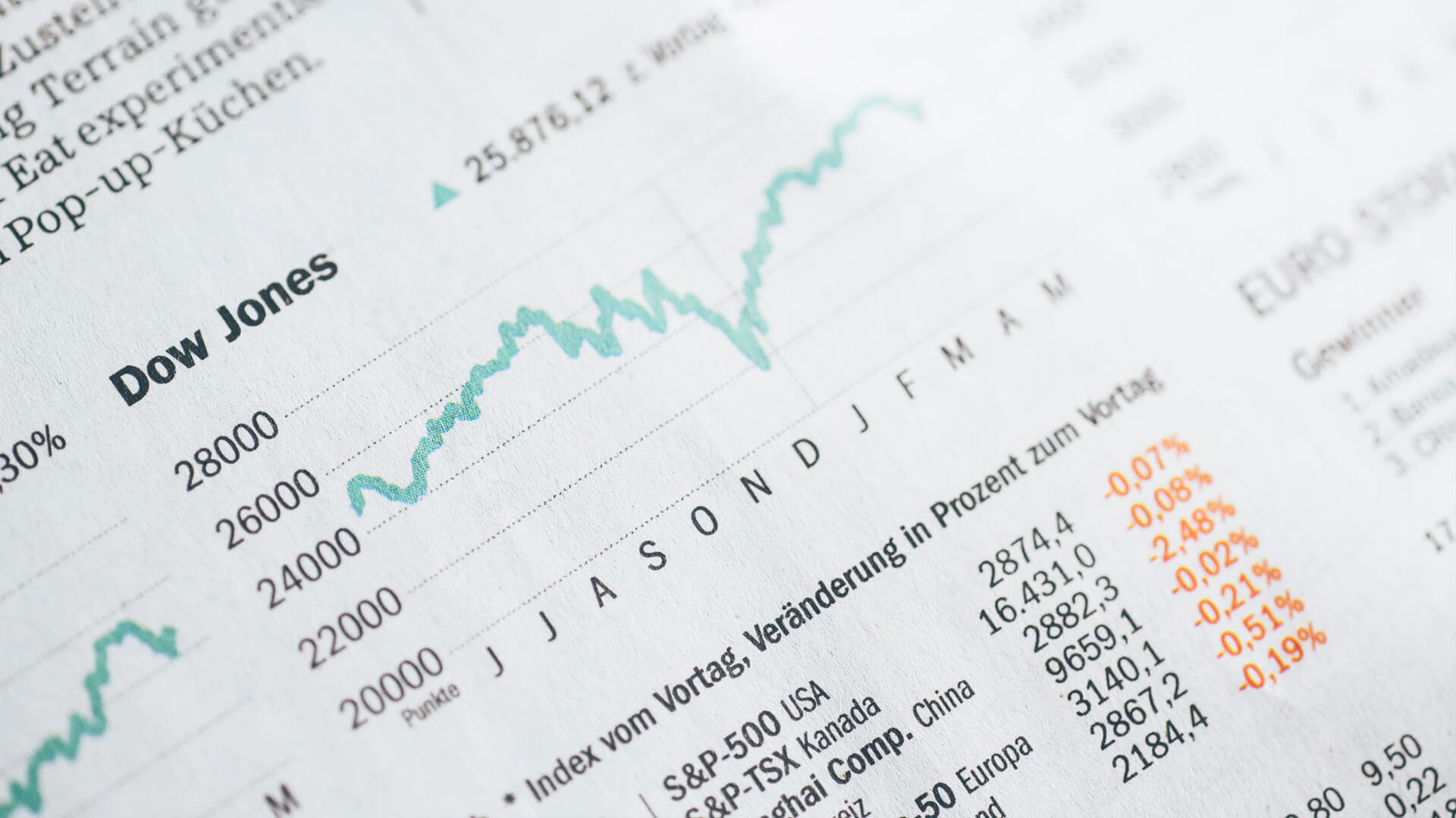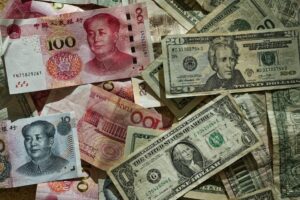The “Coronavirus Guides” is an ongoing series that act as primer documents on wide-ranging topics. Please follow the links to see the Introduction, the Epidemic Guide (America and Europe Edition), and the Europe Guide. To find out more about Peter’s consulting services, please visit Zeihan.com/consulting. There is plenty of negativity and doom and gloom out in the world right now, and in this series there certainly is some of that. Ok, plenty of that. So I thought it might be best to begin the Finance Guide with something a bit sunnier: even while coronavirus pummels the “real” economy, the United States will not suffer a financial crisis…or at least not right away.
Before the coronavirus crisis, there were few underlying financial instabilities in the American economic system. There certainly were nothing like the massive bubbles in real estate markets in 2007. Nor was there the sort of broad industrial dislocations that triggered the 1979 and 1983 oil shocks. There wasn’t even a sector-focused overbuild a la the 2000 dot.com bust. The system had its warts, but they were all part of normal late-economic cycle business. Maybe worth a bit of concern, but nothing fundamentally out of whack. The mass of the Boomers’ approaching retirement (but not yet being there) helped keep financial markets well capitalized, and high levels of capital flight into American financial markets easily explained why stock valuations were so high.
Coronavirus obviously changes things, but let’s be clear, this is not a typical recession. In the lead up to a typical recession, people get a bit too giddy and eventually bid up the price of some sector or subsector or asset class or skill set. That imbalance eventually forces a reckoning that crunches the bid-up item in specific, and associated items in general. That crunching eventually returns pricing to sane levels and we start expanding again. In a financial recession the banks and capital markets are somehow involved, and so their crunching limits capital availability to everyone, cascading their issues throughout all other sectors. That’s why financial recessions (like 2008) tend to hurt so much.
That’s not what we are in. We chose to have the coronavirus recession. We chose to separate ourselves from one another. We chose to not interact or travel or go to work or restaurants or malls. The nature of this recession makes it no less serious – in fact, it is likely to prove more impactful in terms of economic activity lost than the 2008 financial crisis – but it does mean any changes to America’s underlying economic structure are unlikely to be as disruptive or long-lasting as a financial recession would be.
The U.S. Federal Reserve has already injected more liquidity into the American financial system during the coronavirus crisis than it did during the entirety of the 2008 financial crisis. In just the past week it declared it would commit unlimited funds to purchasing securities to prevent market freefalls, and in just a week expanded its balance sheet by a half trillion dollars. That’s nearly as much distressed debt as than the Fed purchased during the three-month nadir of the 2008 crisis. President Trump signed into law March 28 a $2.2 trillion fiscal stimulus and relief program. That’s more ammo than was put to use in the last three recessions combined – and we’re not even two weeks into the economic crisis.
And while it may be heartless to say so, the people coronavirus are likely to kill are not the people who are essential to economic growth in the crisis’ aftermath. The virus so disproportionately targets the elderly that everywhere there is credible data, the vast majority of deaths are over age 70. While the United States has plenty of elderly and what we are about to experience will be heartbreaking, the fact remains that the United States population is not only the youngest of the developed world (excepting Ireland, Iceland and New Zealand), but is actually younger than many parts of the developing world, most notably China. While I most certainly do not fall into the camp of people who call the virus the “Boomer remover,” the fact remains the United States is not going to have a coronavirus-caused skill shortage down the line. Recovery will “only” take money.
So what challenges does the world of finance face?

In the short- and mid-term, it really comes down to not-yet-fully-manifested challenges to the banking sector.
First, new traditional lending activity has pretty much ceased. Not a lot of people are going to venture out and purchase homes or cars when they can’t interact with anyone and aren’t supposed to travel. In the week before the United States started mass movement restrictions, new mortgage applications were already down by one-third. And since granting loans is how banks make money, the longer the quarantine drags on, the more impaired banks will become. The quarantine needs to be in place for two to three weeks before it begins to have positive impacts on case numbers, so a week-by-week building impairment is pretty much baked in.
Second, normal life requires financing, and there was a lot of normal life before the stay-at-home orders snapped into place. Just because no one is taking out new mortgages or car loans doesn’t mean no one has current mortgages or car loans. Only roughly 30% of American workers can reliably work from home. That leaves a lot of people who suddenly face constrained earning potential…and constrained debt-paying potential. Credit cards can help bridge the gap, but even in the hilariously impossible outcome of everything snapping back to “normal” the day the quarantine lifts, missing a month of income will translate into a lot of missed mortgage and car loan and college loan and credit card payments. We may not have started the coronavirus crisis with conventional financial stress, but we will certainly end the crisis with plenty.
Third, the normal tools the financial sector would use when payments are missed – for example, fees and foreclosures – are flat-out unavailable. Everyone understands the coronavirus is the very definition of an exogenous event. People might not have been in the best financial position before, but coronavirus is exactly the sort of thing the average person cannot plan for.
The biggest issue for the government is keeping everyone – citizens and firms both – on life support so few “real economy” companies crash due to the exogenous stress. Banks and private equity firms will be expected to play their part. Both will have to figure out how to handle mass loan delinquencies without triggering mass bankruptcies or mass foreclosures. If they fail to cut the population sufficient slack, the Federal Reserve or – God forbid – Congress will force them to. Expect a lot of debt restructuring to be forced upon all creditors at some point down the line.
Fourth, and in the long-run most significantly, the world is running out of tools. Most of the world never truly recovered from the 2008 financial crisis. The Chinese massively expanded sub-market cost lending to push their system along, and their post-crisis deficit spending has steadily produced less and less economic growth. China’s coronavirus stimulus will have similar diminishing returns, starting from an already diminished level.
For their part the Japanese and Europeans reduced their interest rates to below zero years ago. Only the Canadians, Brits and Americans had any conventional monetary stimulus wiggle room, and in this crisis’ opening days the Canadians cut to 0.75%, the Brits to 0.1% and the Americans to zero. What traditional monetary stimulus that is possible has not only all been deployed already, for most of the world it had all been deployed before anyone even heard of this coronavirus. There simply isn’t any more string to push upon.
Which brings us to the new global disconnect. We can all argue over whether American financial, monetary and fiscal actions will ultimately be effective at mitigating the coronavirus recession, but it is clear to everyone that from points of view financial, monetary and fiscal the Americans not only had more freedom to maneuver and act, but they have front-loaded a lot of activity.
More such activity, much more, is coming. One of the perks of having your own currency is that you can expand your money supply (call it quantitative easing or printing currency or currency debasement if you prefer) to whatever level you feel is warranted by circumstances. The bulk of that $2.2 trillion relief package is deficit spending. The Americans can and will literally throw a bottomless supply of money at this problem. Add in the fact that the American demographic structure makes it the only large, independent, sustainable consumer base of size, and investors still feel that the US economy is the only truly safe one in the transformed economic environment.
Capital flight to the United States – already at record levels pre-coronavirus – has only accelerated. As one might expect, when the Americans finalized their plans for $2.2 trillion in deficit spending, the US dollar dipped for the first time in the crisis. That dip isn’t going to last a week (based on the currency you’re looking at, it hasn’t even lasted the weekend).Expect the US dollar to continue to rise. Expect US dollar shortages globally as everyone tries to put their money into the only safe(ish) market available. Expect the 10-year Treasury to follow the 3-month Treasury into negative yielding territory before the end of April. Never before has the “exorbitant privilege” of being the world’s reserve currency felt more exorbitant or more like a privilege.
This is just the tip of the iceberg. The centralization of global wealth into US dollar assets will trigger cascade effects throughout the financial system domestically and globally, throughout the real economy domestically and globally, while simultaneously triggering political convulsions throughout the world that will impact…everything. Many of these follow-on effects will be the subject of subsequent installments in our Coronavirus Guides series.
And now the pitch: the Coronavirus Guides are our primer documents, intended not to finish the discussions of this or that topic, but to launch them. Contact us at Zeihan.com/consulting to inquire about rates and scheduling options for teleconferences, videoconferences and in-depth consulting calls.








